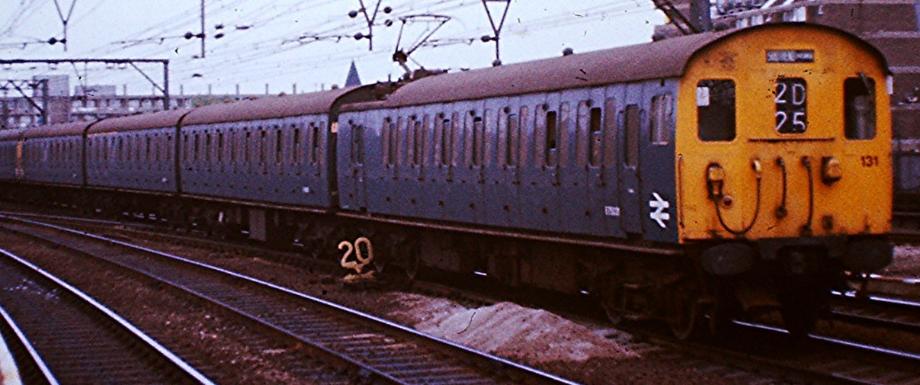Class 307 Profile and Models

307131 at Bethnal Green, London in September 1976. ©Hugh Llewelyn
|
The British Rail Class 307 electric multiple units were built by BR at Eastleigh Works from 1954 to 1956. They were initially classified as AM7 before the introduction of TOPS. Thirty-two of these 4-car units were built for services on the Great Eastern Main Line. The units were constructed to operate off the 1,500 V direct current (DC) overhead power system used on Eastern Region suburban lines from Liverpool Street to Shenfield and Southend Victoria. However, in the late 1950s / early 1960s, these lines were converted to the 6.25 kV/25 kV alternating current (AC) overhead system, which was adopted as standard and coincided with the introduction of new Class 302 (AM2) units. Therefore, from 1960 to 1962, the entire AM7 fleet was extensively rebuilt at Eastleigh Works to allow units to operate from the new voltage system. When new, these trains were used on the newly electrified Great Eastern Main Line, running between Liverpool Street and Southend Victoria on semi-fast services. Following refurbishment in 1983, the fleet saw continued use; primarily on the Liverpool Street to Southend Victoria line, but also on the London, Tilbury and Southend line. The final Class 307 trains were withdrawn in early 1993. |
|
|
Type of Unit |
Electric Multiple Unit |
|
Builder |
BR Ashford or Eastleigh Works |
|
Build Dates |
1954 to 1956 |
|
Total Built |
32 sets |
|
Coaches Per Unit |
4-car |
|
Capacity |
363 seats |
|
Power Output |
700 hp |
|
Top Speed |
75 mph |
|
Operated By |
British Rail |
|
Main Duties |
Local Passenger |
|
In Service Until |
1993 |
|
Surviving Examples |
3 individual cars |